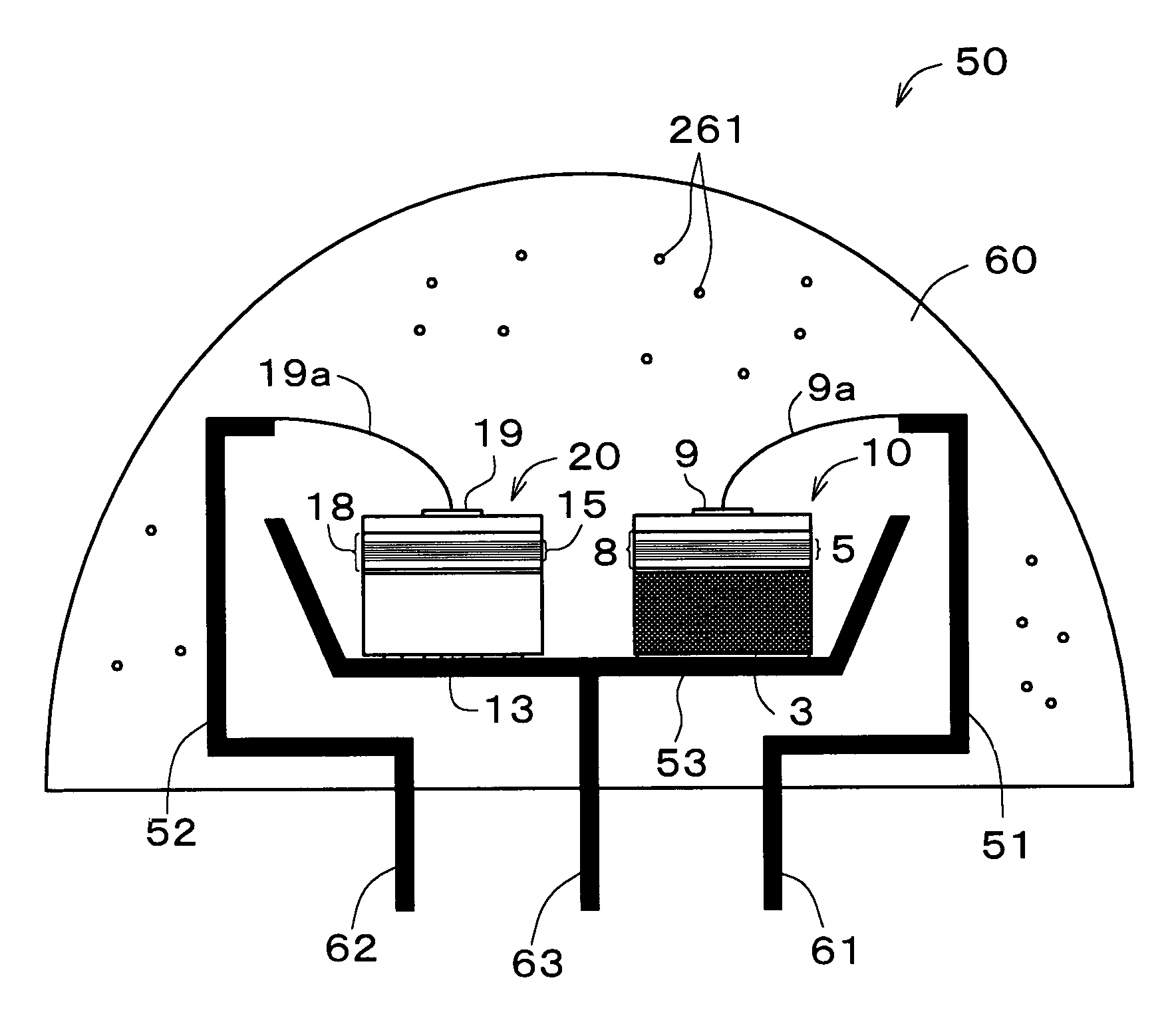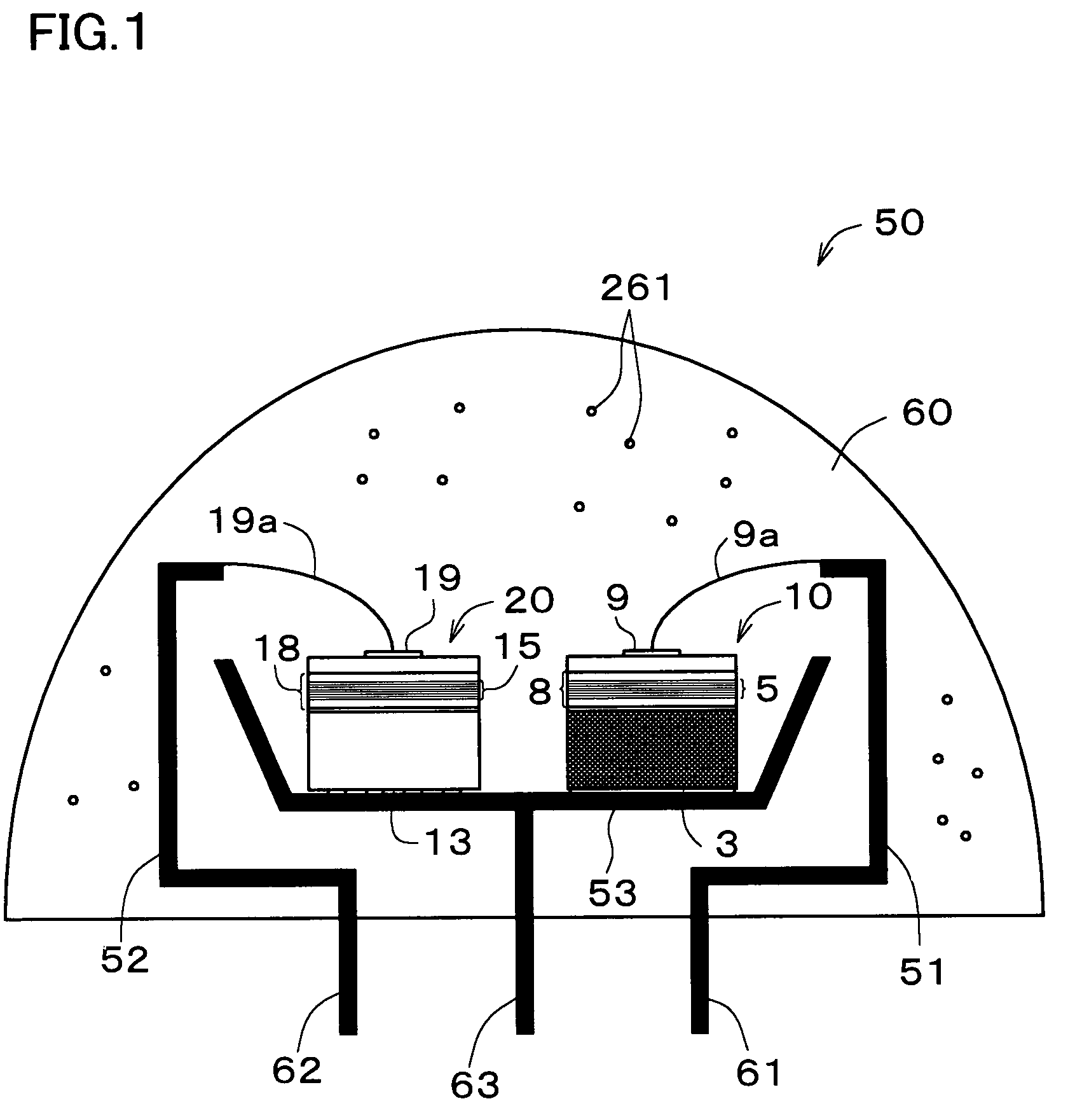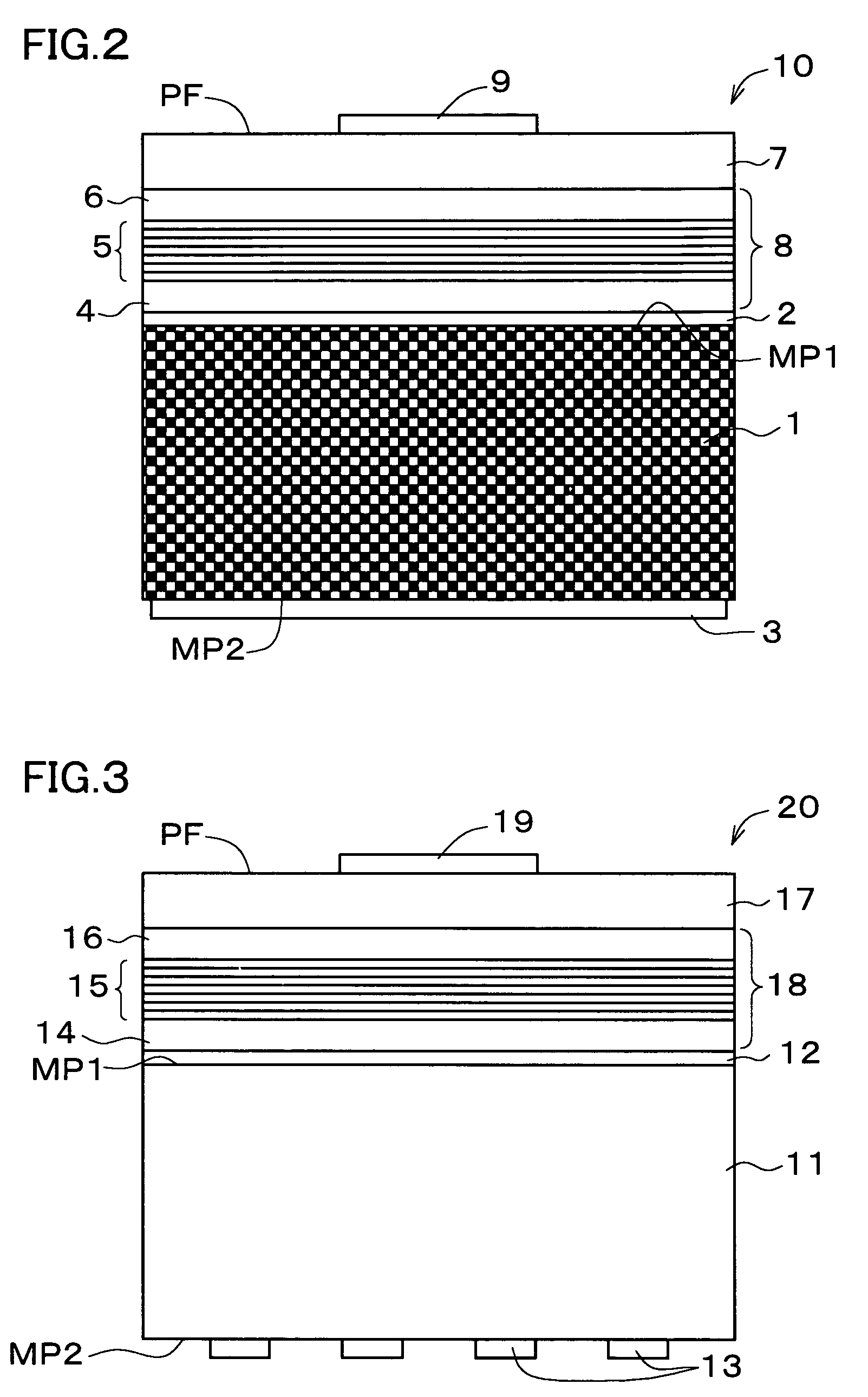Light emitting device having a pseudo-continuous spectrum and lighting apparatus using the same
a light emitting device and pseudo-continuous spectrum technology, which is applied in the direction of semiconductor devices for light sources, fixed installations, lighting and heating apparatus, etc., can solve the problems of not being able to render subtle lighting effects owned by continuous spectrum, and it is impossible for the conventional semiconductor light emitting device to output a continuous spectrum, etc., to achieve excellent color rendering properties, easy adjustment of emission wavelength, and high intensity
- Summary
- Abstract
- Description
- Claims
- Application Information
AI Technical Summary
Benefits of technology
Problems solved by technology
Method used
Image
Examples
Embodiment Construction
[0068]The following paragraphs will describe embodiments of the invention referring to the attached drawings.
[0069]FIG. 1 is a schematic drawing of an exemplary light source for illumination using a light emitting device according to one embodiment of the invention. The light source for illumination 50 has light emitting devices 10, 20 according to a concept of the invention. The light emitting devices 10, 20 are specifically a first device 10 and a second device 20, where active layers (see FIGS. 2 and 3) of double hetero light emitting layer portions 8, 18 (simply referred to as “light emitting layer portions”, hereinafter), which are composed of compound semiconductors, are respectively configured so as to include a plurality of emission unit layers differing from each other in the band gap energy. Emission wavelength of the emission unit layers of the first device 10 is set within a range from 520 nm to 700 nm, both ends inclusive, and that of the second device 20 is set within ...
PUM
 Login to View More
Login to View More Abstract
Description
Claims
Application Information
 Login to View More
Login to View More - R&D
- Intellectual Property
- Life Sciences
- Materials
- Tech Scout
- Unparalleled Data Quality
- Higher Quality Content
- 60% Fewer Hallucinations
Browse by: Latest US Patents, China's latest patents, Technical Efficacy Thesaurus, Application Domain, Technology Topic, Popular Technical Reports.
© 2025 PatSnap. All rights reserved.Legal|Privacy policy|Modern Slavery Act Transparency Statement|Sitemap|About US| Contact US: help@patsnap.com



